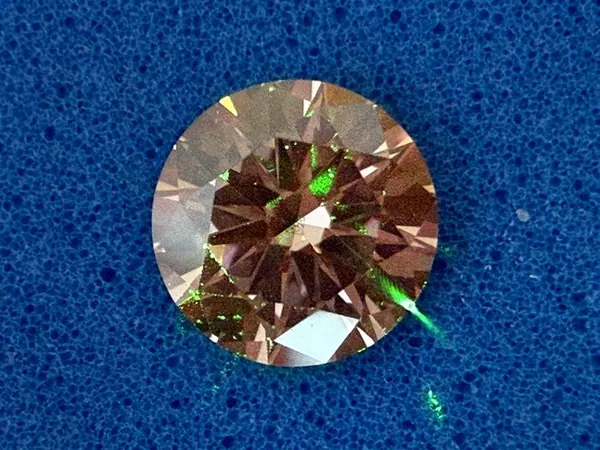
Revolutionary Quantum Diamond Sensor: A Game-Changer in Cancer Detection!
2025-08-20
Author: Arjun
A Breakthrough in Cancer Detection Technology
Researchers at the University of Warwick have unveiled a groundbreaking innovation—a quantum diamond sensor designed specifically for the accurate detection of cancer cells. This advancement promises to transform early tumor identification and enhance surgical guidance.
Tackling the Challenges of Metastatic Cancer
Detecting cancer becomes increasingly complex when tumor cells metastasize, spreading to other organs via lymph nodes and the lymphatic system. The new quantum diamond sensor confronts this challenge head-on.
How the Quantum Diamond Sensor Works
This revolutionary device is non-toxic and radioactivity-free, utilizing the remarkable properties of diamonds to specifically diagnose metastasized breast cancer. At its core, the sensor employs nitrogen-vacancy (NV) centers within the diamond lattice, which provide it with the ability to detect minuscule changes in magnetic fields. This incredible sensitivity allows the sensor to detect magnetic tracer fluids at concentrations much lower than typical clinical doses, making it an exceptionally precise and compact tool for cancer surgery.
Minimally Invasive and Exceptionally Accurate
Designed for operation at room temperature, this quantum diamond sensor offers surgeons a versatile solution for minimally invasive procedures, all while maintaining unparalleled accuracy. During breast cancer surgery, the sensor locates magnetic tracer fluid, which is injected alongside tumor cells, to guide the removal of affected lymph nodes.
A Small Yet Powerful Innovation
PhD student Alex Newman explained, "We’ve managed to shrink the sensor head down to just 10 mm, making it the first diamond sensor small enough for endoscopic and keyhole surgeries. It's incredibly sensitive, detecting one-hundredth of the typical full clinical dose of magnetic tracer fluid!"
Why Diamonds?
Professor Gavin Morley, the senior author of the study, highlighted that diamonds are uniquely positioned to sense magnetic fields due to their color centers, which allow for the detection of slight magnetic field changes. He expressed hopes that these sensors can eventually benefit not only medical applications but also spacecraft and fusion power.
The Future of Cancer Monitoring
While traditional methods for tracing cancer often involve radioactive sensors or dyes (which can trigger allergic reactions), these aren't always available or practical. The quantum diamond sensor offers a user-friendly, minimal side-effect solution that could revolutionize cancer detection.
A Broader Impact on Cancer Treatment
The potential applications for magnetic tracer fluids are vast, potentially extending to other cancers such as lung, liver, colorectal, and esophageal. This technology could greatly improve patient outcomes by enhancing the capabilities of current detection methods.
A Collaborative Effort to Innovate
Stuart Robertson, a Consultant Breast Cancer Surgeon at University Hospitals Coventry and Warwickshire (UHCW) NHS Trust, remarked on the importance of collaboration with the University of Warwick, stating that he regularly uses magnetic localization in his work for detecting lymph nodes and encourages the continued exploration of optimized magnetic technologies.
As cancer detection technologies evolve, the quantum diamond sensor stands out as a beacon of hope, promising a future where detecting and treating cancer is more effective and less invasive than ever before!


 Brasil (PT)
Brasil (PT)
 Canada (EN)
Canada (EN)
 Chile (ES)
Chile (ES)
 Česko (CS)
Česko (CS)
 대한민국 (KO)
대한민국 (KO)
 España (ES)
España (ES)
 France (FR)
France (FR)
 Hong Kong (EN)
Hong Kong (EN)
 Italia (IT)
Italia (IT)
 日本 (JA)
日本 (JA)
 Magyarország (HU)
Magyarország (HU)
 Norge (NO)
Norge (NO)
 Polska (PL)
Polska (PL)
 Schweiz (DE)
Schweiz (DE)
 Singapore (EN)
Singapore (EN)
 Sverige (SV)
Sverige (SV)
 Suomi (FI)
Suomi (FI)
 Türkiye (TR)
Türkiye (TR)
 الإمارات العربية المتحدة (AR)
الإمارات العربية المتحدة (AR)